A Method for Establishing a Hygrothermally Controlled Test Room for Measuring the Water Vapor Resistivity Characteristics of Construction Materials
Abstract
1. Introduction
2. Materials and Methods
2.1. Design and Description of the Thermal Test Building
2.2. Cabling and Installation of Integrated Data Acqusition System
2.3. Cooling and Heating System
2.4. Humidity and Pressure Control System
2.5. Calibration of the Environmental Instruments
2.6. Monitoring and Controlling Environmental Conditions
2.7. Inter-Laboratory Testing of Wet-Cup and Dry-Cup Dishes
3. Results
3.1. Hygrothermal Control of the Test Room
3.2. Comparison of the Interlaboratory Results for the Water Vapor Diffusion Properties
4. Discussion
5. Conclusions and Recommendations
Author Contributions
Funding
Acknowledgments
Conflicts of Interest
References
- Künzel, H.M.; Holm, A.; Zirkelbach, D.; Karagiozis, A.N. Simulation of Indoor Temperature and Humidity Conditions Including Hygrothermal Interactions with the Building Envelope. Sol. Energy 2005, 78, 554–561. [Google Scholar] [CrossRef]
- Künzel, H.M.; Zirkelbach, D. Advances in Hygrothermal Building Component Simulation: Modeling Moisture Sources Likely to Occur Due to Rainwater Leakage. J. Build. Perform. Simul. 2013, 6, 346–353. [Google Scholar] [CrossRef]
- Hall, M.R.; Casey, S.P.; Loveday, D.L.; Gillott, M. Analysis of Uk Domestic Building Retrofit Scenarios Based on the E. On Retrofit Research House Using Energetic Hygrothermics Simulation–Energy Efficiency, Indoor Air Quality, Occupant Comfort, and Mold Growth Potential. Build. Environ. 2013, 70, 48–59. [Google Scholar] [CrossRef]
- Nilsson, L. Methods of Measuring Moisture in Building Materials and Structures: State-of-the-Art Report of the Rilem Technical Committee 248-Mmb; Springer: Cham, Switzerland, 2018. [Google Scholar]
- You, S.; Li, W.; Ye, T.; Hu, F.; Zheng, W. Study on Moisture Condensation on the Interior Surface of Buildings in High Humidity Climate. Build. Environ. 2017, 125, 39–48. [Google Scholar] [CrossRef]
- Dewsbury, M.; Law, T. Temperate Climates, Warmer Houses and Built Fabric Challenges. Procedia Eng. 2017, 180, 1065–1074. [Google Scholar] [CrossRef]
- Fořt, J.; Šál, J.; Kočí, J.; Černý, R. Energy Efficiency of Novel Interior Surface Layer with Improved Thermal Characteristics and Its Effect on Hygrothermal Performance of Contemporary Building Envelopes. Energies 2020, 13, 2012. [Google Scholar] [CrossRef]
- Moon, H.J.; Ryu, S.H.; Kim, J.T. The Effect of Moisture Transportation on Energy Efficiency and Iaq in Residential Buildings. Energy Build. 2014, 75, 439–446. [Google Scholar] [CrossRef]
- Wang, Y.; Ma, C.; Liu, Y.; Wang, D.; Liu, J. Effect of Moisture Migration and Phase Change on Effective Thermal Conductivity of Porous Building Materials. Int. J. Heat Mass Transf. 2018, 125, 330–342. [Google Scholar] [CrossRef]
- Dong, W.; Chen, Y.; Bao, Y.; Fang, A. A Validation of Dynamic Hygrothermal Model with Coupled Heat and Moisture Transfer in Porous Building Materials and Envelopes. J. Build. Eng. 2020, 32, 101484. [Google Scholar] [CrossRef]
- Dewsbury, M.; Law, T.; Potgieter, J.; Fitzgerald, D.; McComish, B.; Chandler, T.; Soudan, A. Scoping Study of Condensation in Residential Buildings: Final Report; Australian Building Codes Board, Department of Industry Innovation and Science Canberra Australia: Canberra, Australia, 2016.
- Nath, S.; Dewsbury, M.; Orr, K. Is New Housing Health Hazard? In Proceedings of the Engaging Architectural Science: Meeting the Challenges of Higher Density, 52nd International Conference of the Architectural Science Association, RMIT University, Melbourne, Australia, 28 November–1 December 2018. [Google Scholar]
- Olaoye, T.S.; Dewsbury, M. Establishing an Environmentally Controlled Room to Quantify Water Vapor Resistivity Properties of Construction Materials. In Revisiting the Role of Architecture for ‘Surviving’ Development, Proceedings of the 53rd International Conference of the Architectural Science Association, Roorkee, India, 28–30 November 2019; Agrawal, A., Gupta, R., Eds.; Architectural Science Association (ANZAScA): Roorkee, India, 2019; pp. 675–684. [Google Scholar]
- Dewsbury, M.; Soudan, A.; Su, F.; Geard, D.; Cooper, A.; Law, T. Condensation Risk Mitigation for Tasmanian Housing; Department of Justice Tasmania, Hobart: Hobart, Australia, 2018.
- Woloszyn, M.; Rode, C. Tools for Performance Simulation of Heat, Air and Moisture Conditions of Whole Buildings. Build. Simul. 2008, 1, 5–24. [Google Scholar] [CrossRef]
- International Standard Organization. Hygrothermal Performance of Building Components and Building Elements—Internal Surface Temperature to Avoid Critical Surface Humidity and Interstitial Condensation—Calculation Methods (ISO 13788:). In EVS-EN ISO 13788:2012; Estonian Center or Standardization: Brussels, Belgium, 2012. [Google Scholar]
- Ramos, N.M.; Delgado, J.Q.; Barreira, E.; de Freitas, V.P. Hygrothermal Properties Applied in Numerical Simulation: Interstitial Condensation Analysis. J. Build. Apprais. 2009, 5, 161–170. [Google Scholar] [CrossRef]
- Roels, S.; Depraetere, W.; Carmeliet, J.; Hens, H. Simulating Non-Isothermal Water Vapor Transfer: An Experimental Validation on Multi-Layered Building Components. J. Therm. Envel. Build. Sci. 1999, 23, 17–40. [Google Scholar] [CrossRef]
- Hagentoft, C.; Kalagasidis, A.S.; Adl-Zarrabi, B.; Roels, S.; Carmeliet, J.; Hens, H.; Grunewald, J.; Funk, M.; Becker, R.; Shamir, D.; et al. Assessment Method of Numerical Prediction Models for Combined Heat, Air and Moisture Transfer in Building Components: Benchmarks for One-Dimensional Cases. J. Therm. Envel. Build. Sci. 2004, 27, 327–352. [Google Scholar] [CrossRef]
- Glass, S.V.; TenWolde, A.; Zelinka, S.L. Hygrothermal Simulation: A Tool for Building Envelope Design Analysis; Wood Design Focus: LaGrange, GA, USA, 2013; Volume 23, Number 3; Fall Issue 2013; pp. 18–25. [Google Scholar]
- Libralato, M.; Saro, O.; de Angelis, A.; Spinazzè, S. Comparison between Glaser Method and Heat, Air and Moisture Transient Model for Moisture Migration in Building Envelopes. Appl. Mech. Mater. 2019, 887, 385–392. [Google Scholar] [CrossRef]
- Pallin, S.; Boudreaux, P.; Shrestha, S.; New, J.; Adams, M. State-of-the-Art for Hygrothermal Simulation Tools; US Department of Energy: Springfield, VA, USA, 2017.
- ABCB. The National Constrcution Code: Volume 1; Australian Building Codes Board: Canberra, Australia, 2019.
- ABCB. The National Construction Code: Volume 2; Australian Building Codes Board: Canberra, Australia, 2019.
- ASTM. Standard Test Methods for Water Vapor Transmission of Materials. In E96/E96M; ASTM International: ASTM: West Conshohocken, PA, USA, 2010. [Google Scholar]
- Borjesson, F. An Investigation of the Water Vapor Resistance-the Humidity Detection Sensor Method in Versmaperm Mkiv Compared to the Gravimetric Method. Master’s Thesis, Chalmers University of Technology, Gothenburg, Sweden, 2013. [Google Scholar]
- McCullough, E.A.; Kwon, M.; Shim, H. Comparison of Standard Methods for Measuring Water Vapor Permeability of Fabrics. Meas. Sci. Technol. 2003, 14, 1402–1408. [Google Scholar] [CrossRef]
- Gibson, P.; Rivin, D.; Berezin, A.; Nadezhdinskii, A. Measurement of Water Vapor Diffusion through Polymer Films and Fabric/Membrane Laminates Using a Diode Laser Spectroscope. Polym. Plast. Technol. Eng. 1999, 38, 221–239. [Google Scholar] [CrossRef]
- Huang, J.; Qian, X. A New Test Method for Measuring the Water Vapor Permeability of Fabrics. Meas. Sci. Technol. 2007, 18, 3043–3047. [Google Scholar] [CrossRef]
- Richter, J.; Staněk, K. Measurements of Water Vapor Permeability—Tightness of Fibreglass Cups and Different Sealants and Comparison of Μ-Value of Gypsum Plaster Boards. Procedia Eng. 2016, 151, 277–283. [Google Scholar] [CrossRef]
- ISO, International Standard Organization EN. Hygrothermal Performance of Building Materials and Products—Determination of Water Vapor Transmission Properties—Cup Method Iso 12572. In EVS-EN ISO 12572:2016; Estonian Center or Standardization: Brussels, Belgium, 2016. [Google Scholar]
- Janz, M. Methods of Measuring the Moisture Diffusivity at High Moisture Levels. Ph.D. Thesis, Building Materials LTH, Lund Unversity, Lund, Sweden, 1997. [Google Scholar]
- Li, K.; Xu, Z.; Jun, G. Experimental Investigation of Hygrothermal Parameters of Building Materials under Isothermal Conditions. J. Build. Phys. 2009, 32, 355–370. [Google Scholar]
- Olaoye, T.S.; Dewsbury, M. Australian Building Materials and Vapor Resistivity. In Building Physics Forum; AIRAH: Wollogong, Australia, 2018. [Google Scholar]
- Bomberg, M.; Pazera, M. Methods to Check Reliability of Material Characteristics for Use of Models in Real Time Hygrothermal Analysis. In Research in Building Physics—Proceedings of the First Central European Symposium on Building Physics, Cracow–Lodz, Poland, 13–15 September 2010; Gawin, D., Kisielewicz, T., Eds.; Technical University of Cracow: Cracow-lodz, Poland, 2010. [Google Scholar]
- Galbraith, G.H.; Kelly, D.J.; McLean, R.C. Alternative Methods for Measuring Moisture Transfer Coefficients of Building Materials. In Proceedings of the 2nd International Conference on Building Physics, Antwerpen, Belgium, 14–18 September 2003; pp. 249–254. [Google Scholar]
- Couturier, M.; Boucher, C. Dynamic Water Vapor Permeance of Building Materials and the Benefits to Buildings. In Proceedings of the 26th RCI International Convention and Trades Show, Reno, NV, USA, 29 April 2011. [Google Scholar]
- Wu, Y. Experimental Study of Hygrothermal Properties for Building Materials. Master’s Thesis, Concordia University, Montreal, QC, USA, 2007. [Google Scholar]
- Rafidiarison, H.; Rémond, R.; Mougel, E. Dataset for Validating 1-D Heat and Mass Transfer Models within Building Walls with Hygroscopic Materials. Build. Environ. 2015, 89, 356–368. [Google Scholar] [CrossRef]
- Dewsbury, M.; Fay, M.R.; Nolan, G.; Vale, R.J.D. The Design of Three Thermal Performance Test Cells in Launceston. In Towards Solutions for a Liveable Future: Progress, Practice, Performance, People; Dirk, J.S., Coulson, T.R., Eds.; Deakin University: Geelong, Australia, 2007; pp. 91–100. [Google Scholar]
- Dewsbury, M.; Fay, R.; Nolan, G. Thermal Performance of Light-Weight Timber Test Buildings. In Proceedings of the World Congress of Timber Engineering, Miyazaki, Japan, 2–5 June 2008. [Google Scholar]
- Feng, C.; Guimarães, A.S.; Ramos, N.; Sun, L.; Gawin, D.; Konca, P.; Hall, C.; Zhao, J.; Hirsch, H.; Grunewald, J. Hygric Properties of Porous Building Materials (Vi): A Round Robin Campaign. Build. Environ. 2020, 185, 107242. [Google Scholar] [CrossRef]
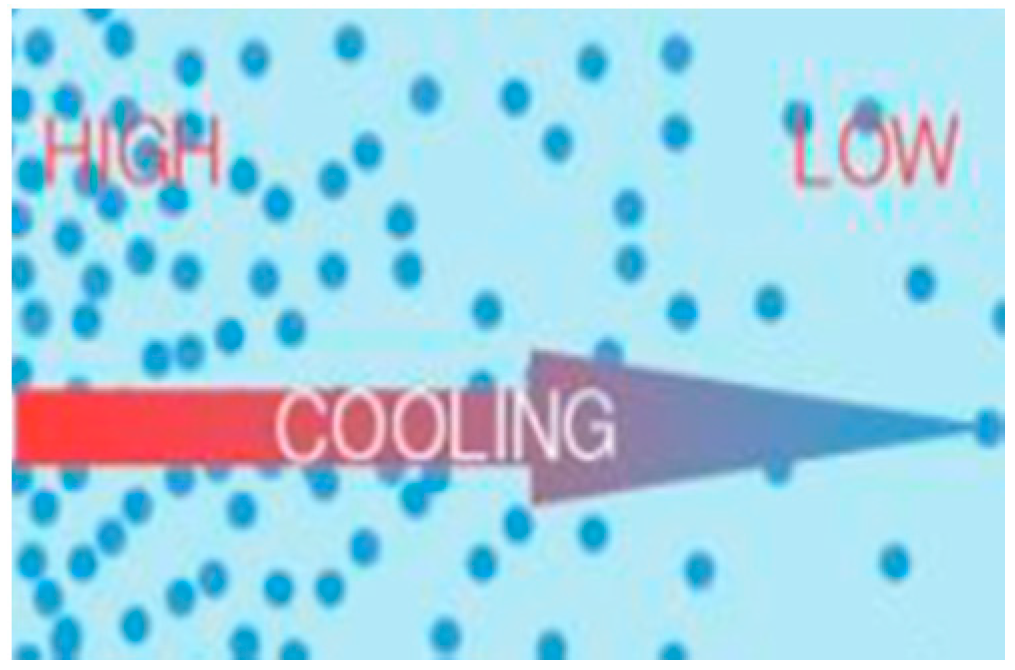
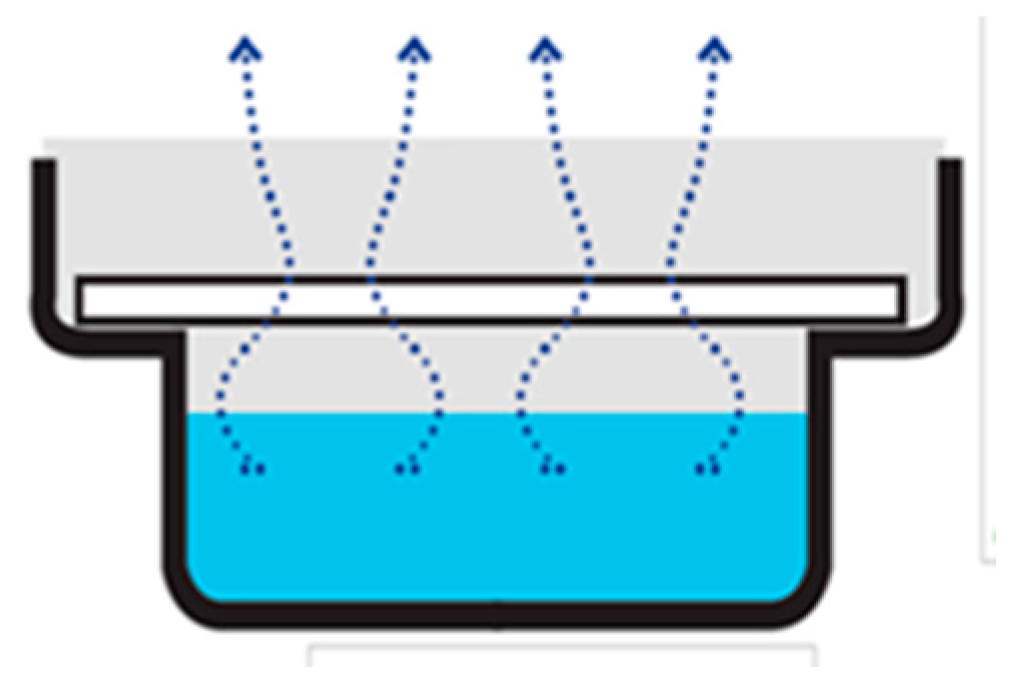
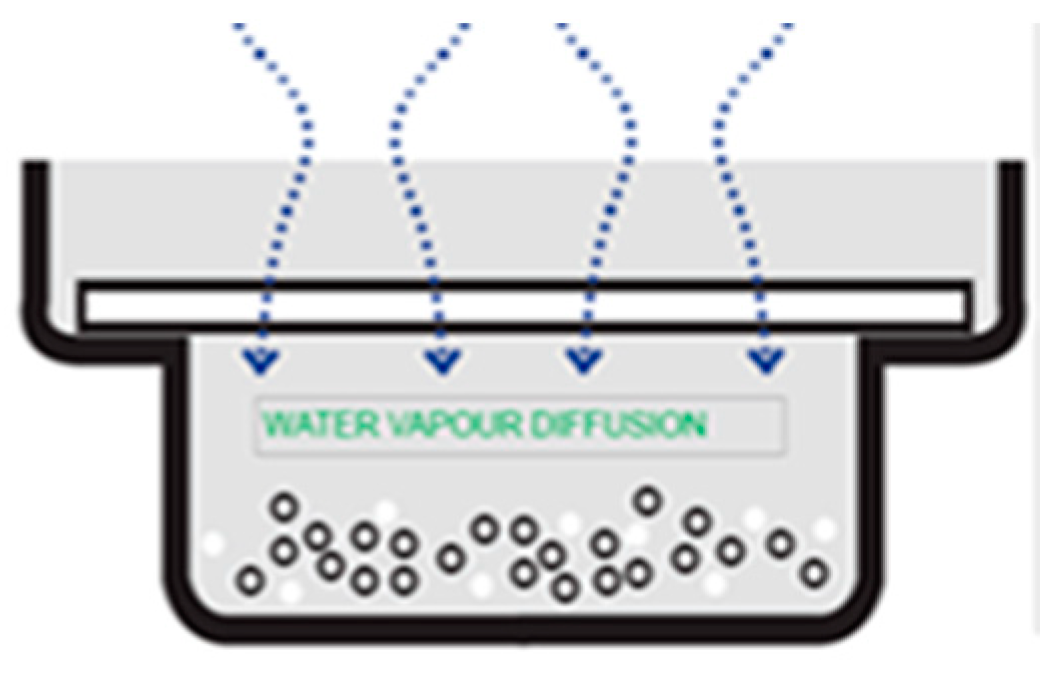
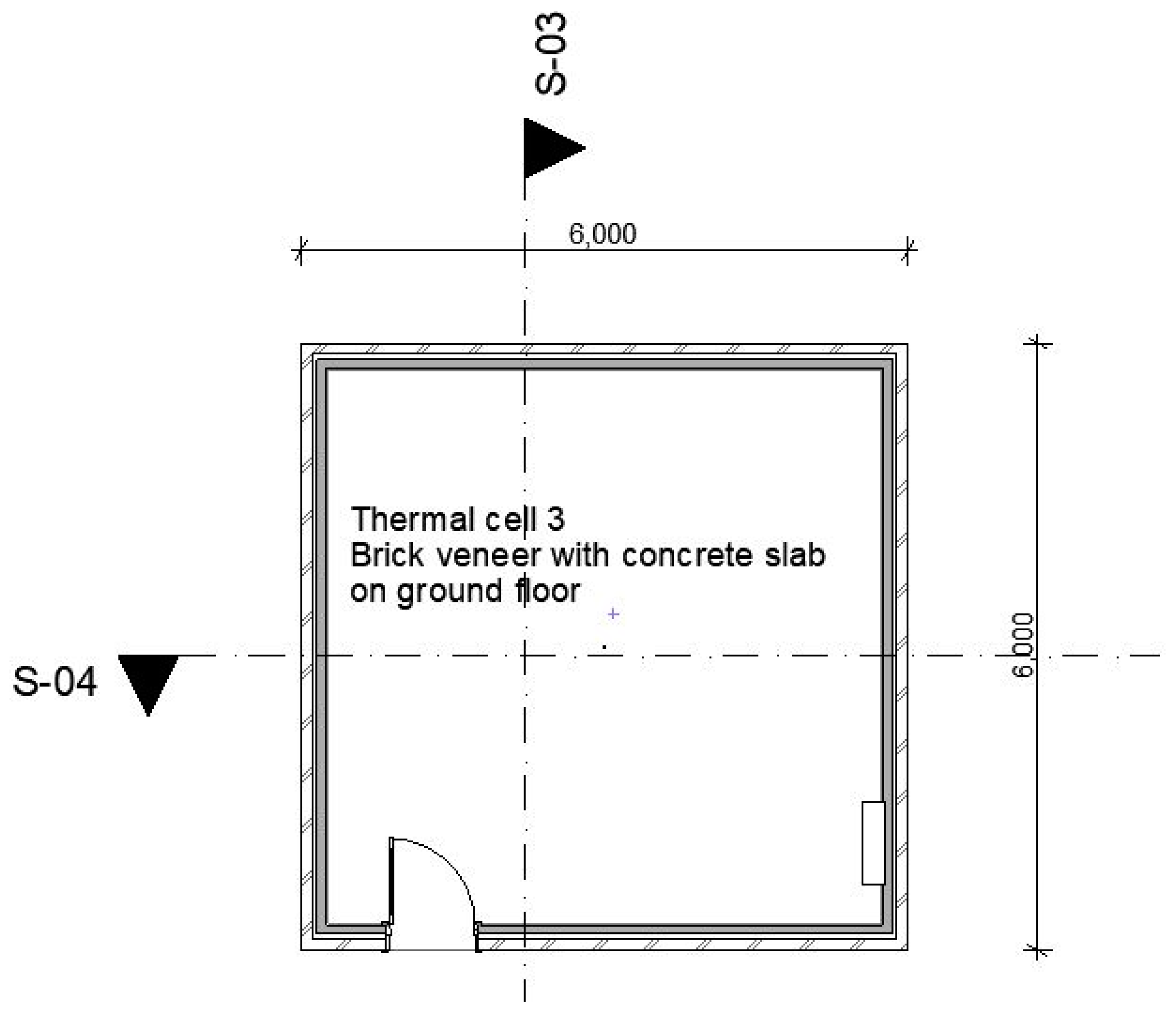

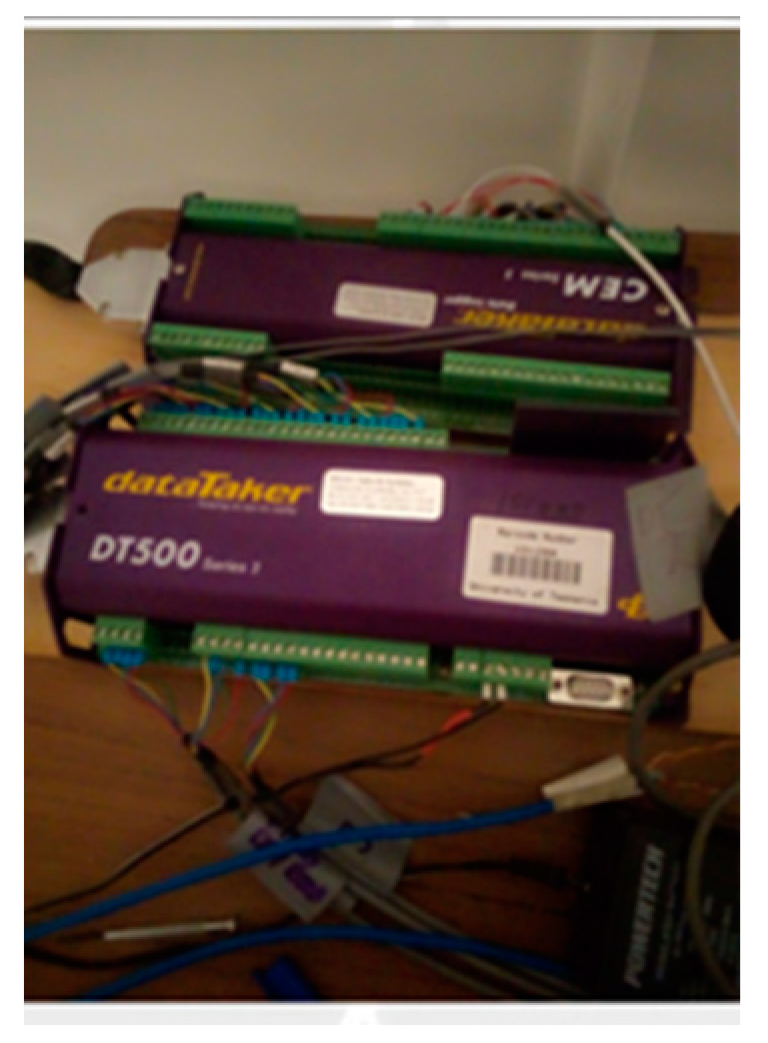
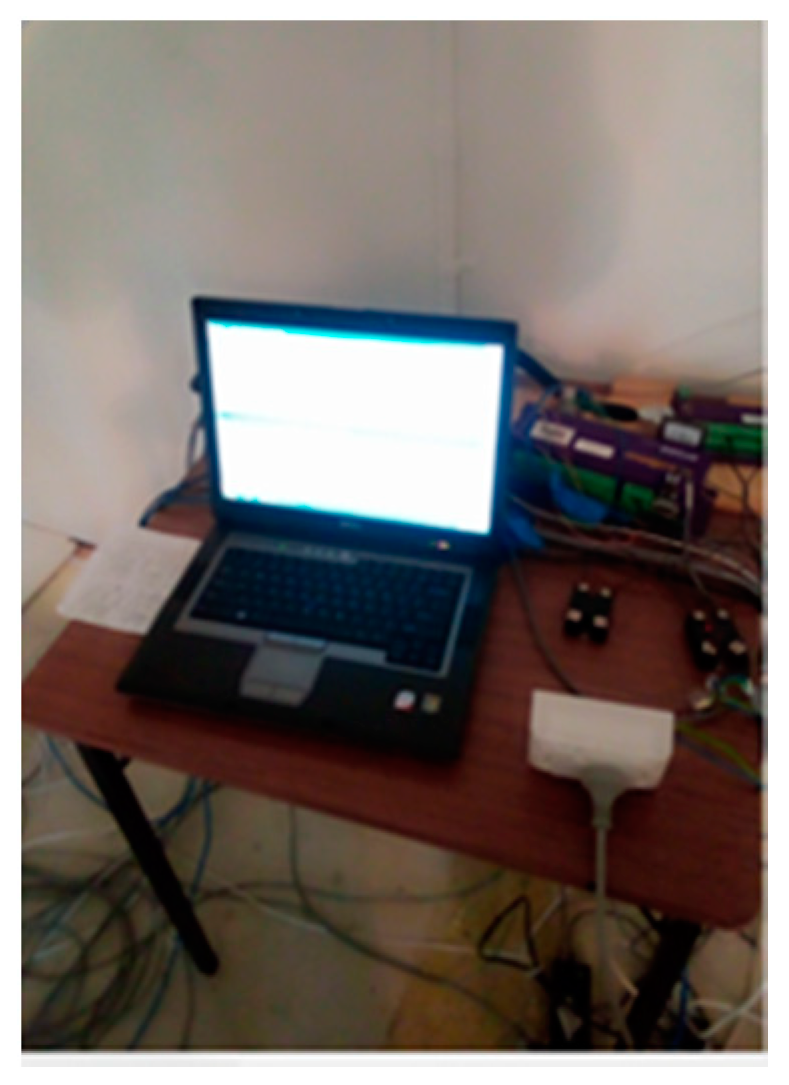
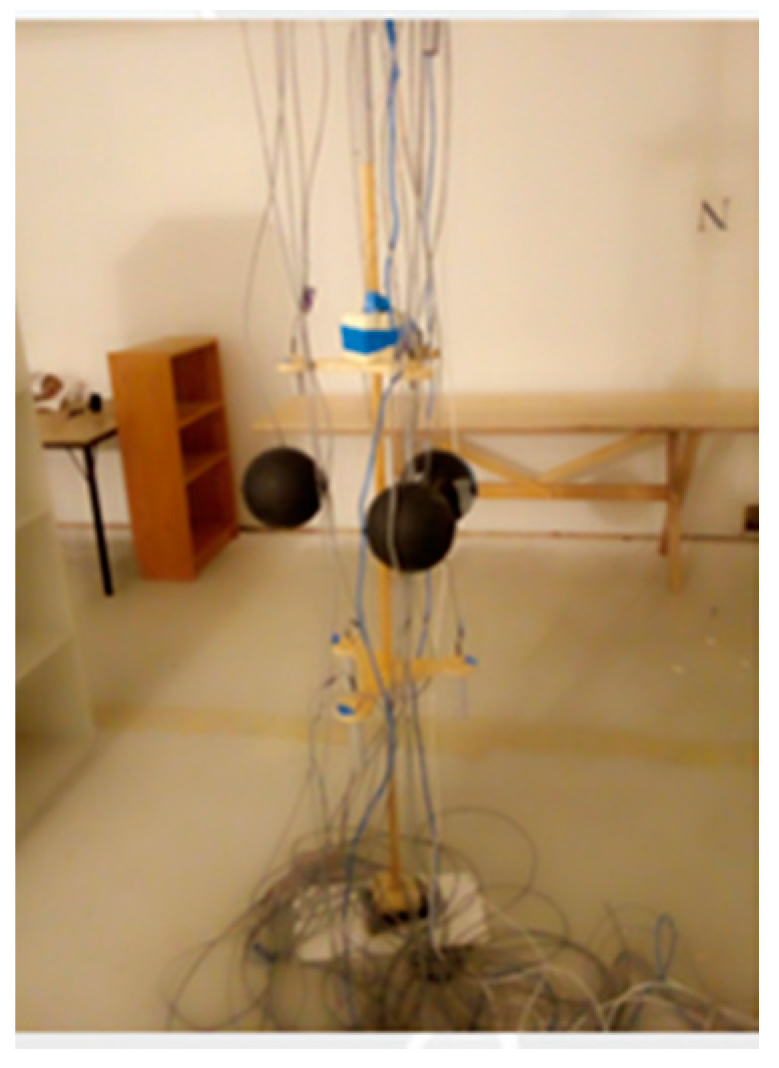
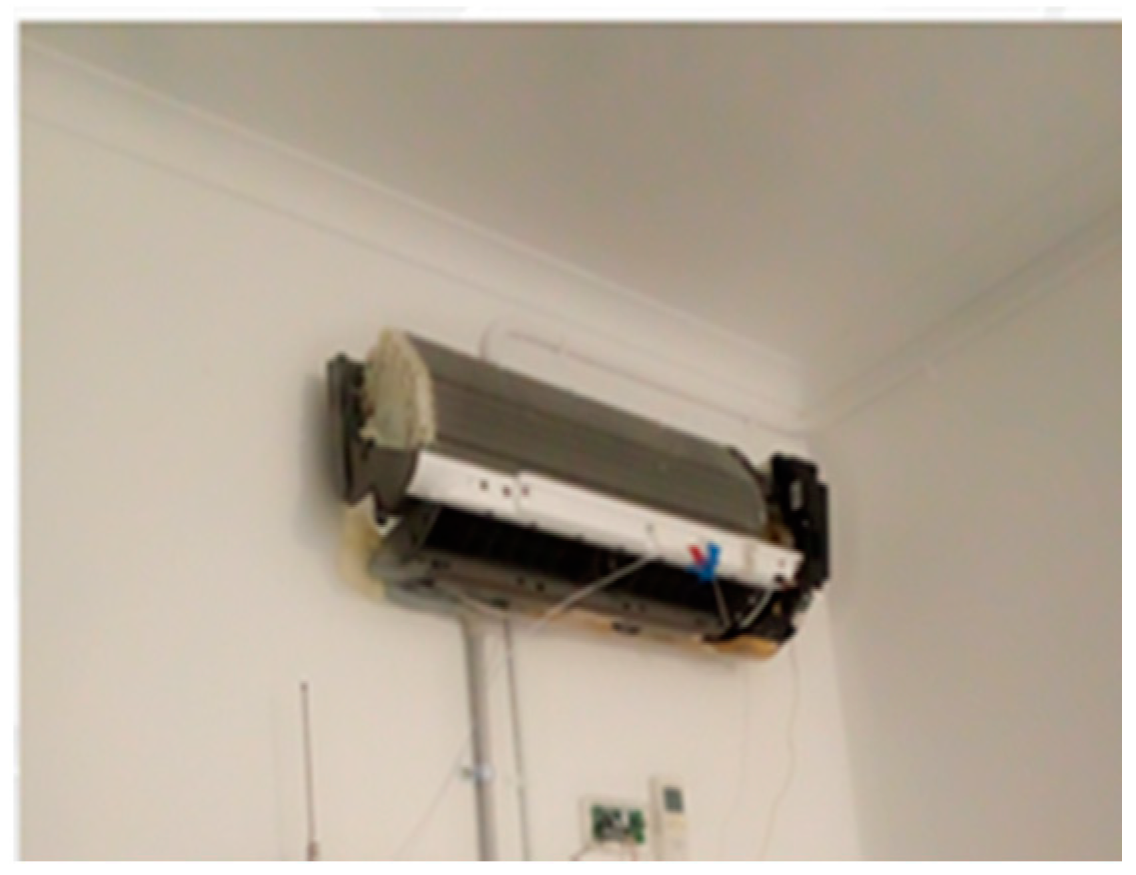

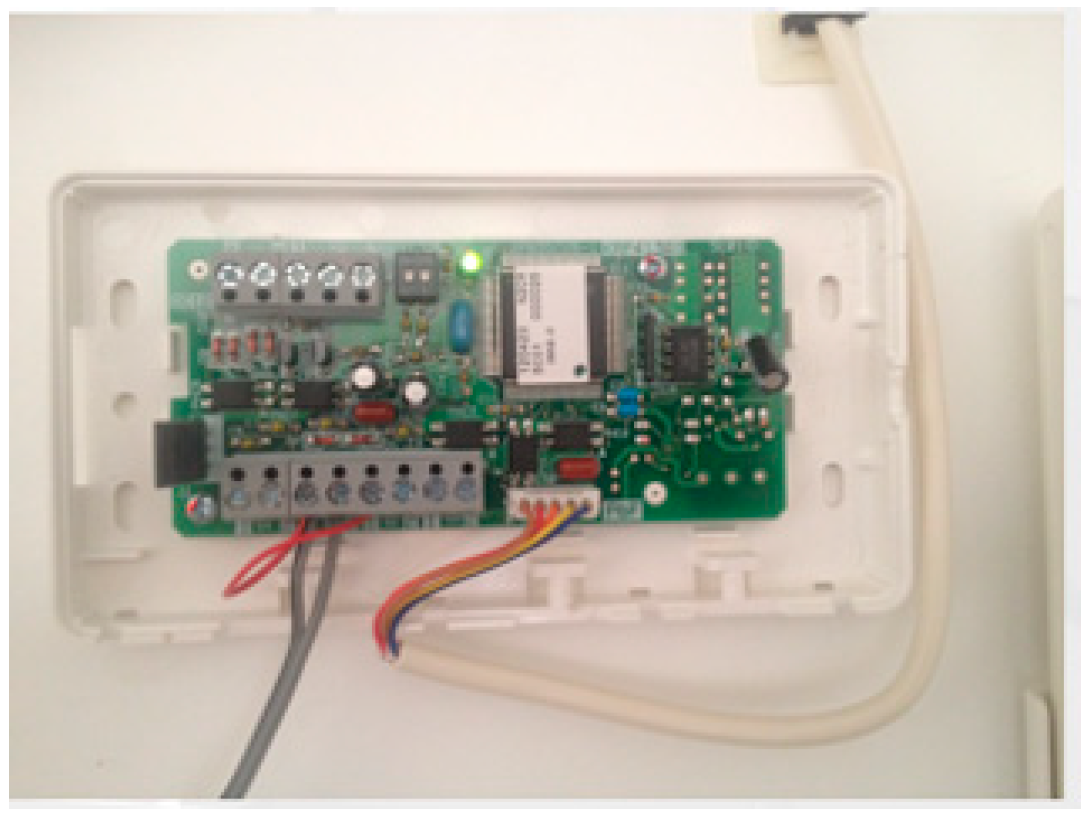
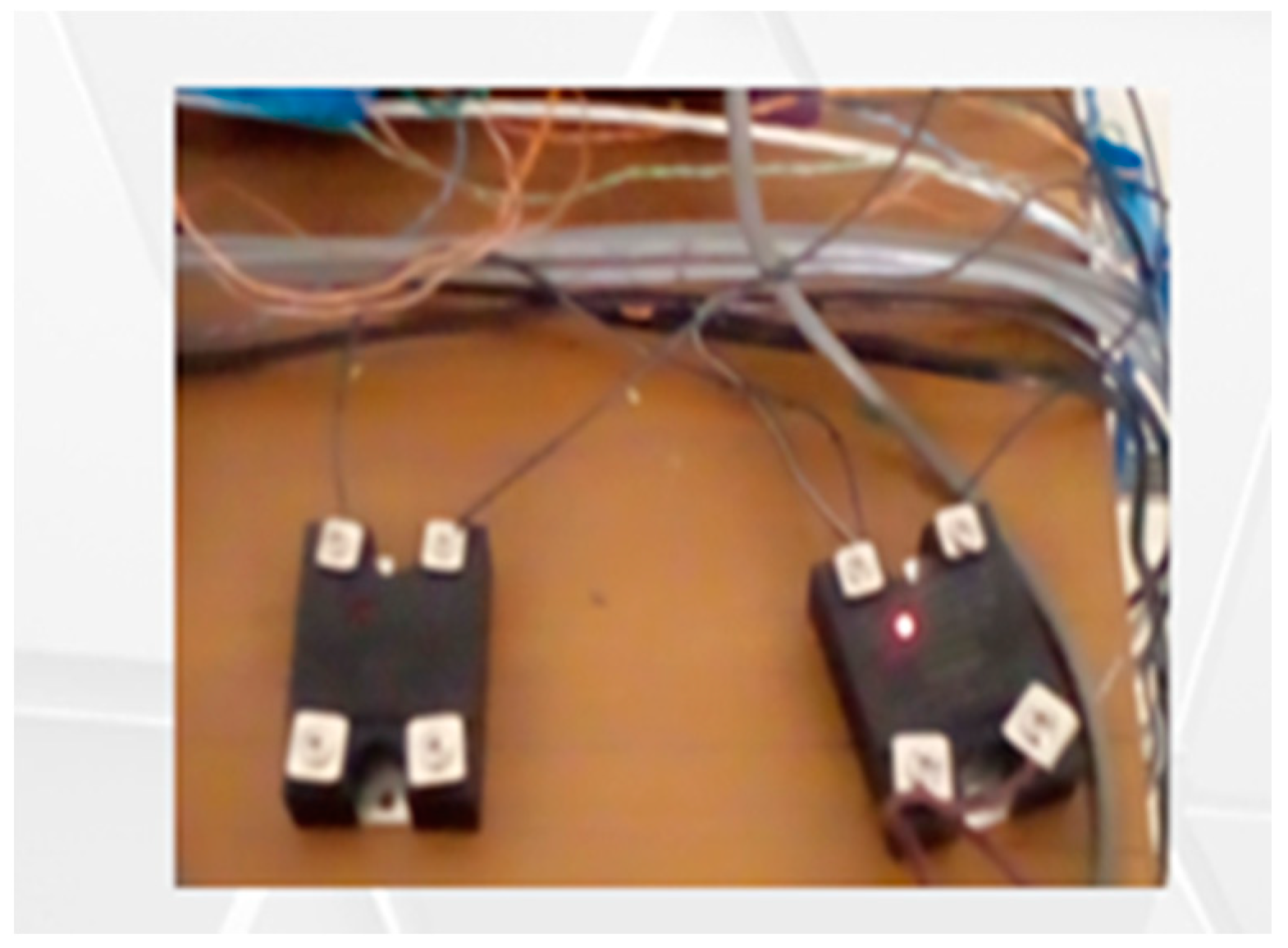
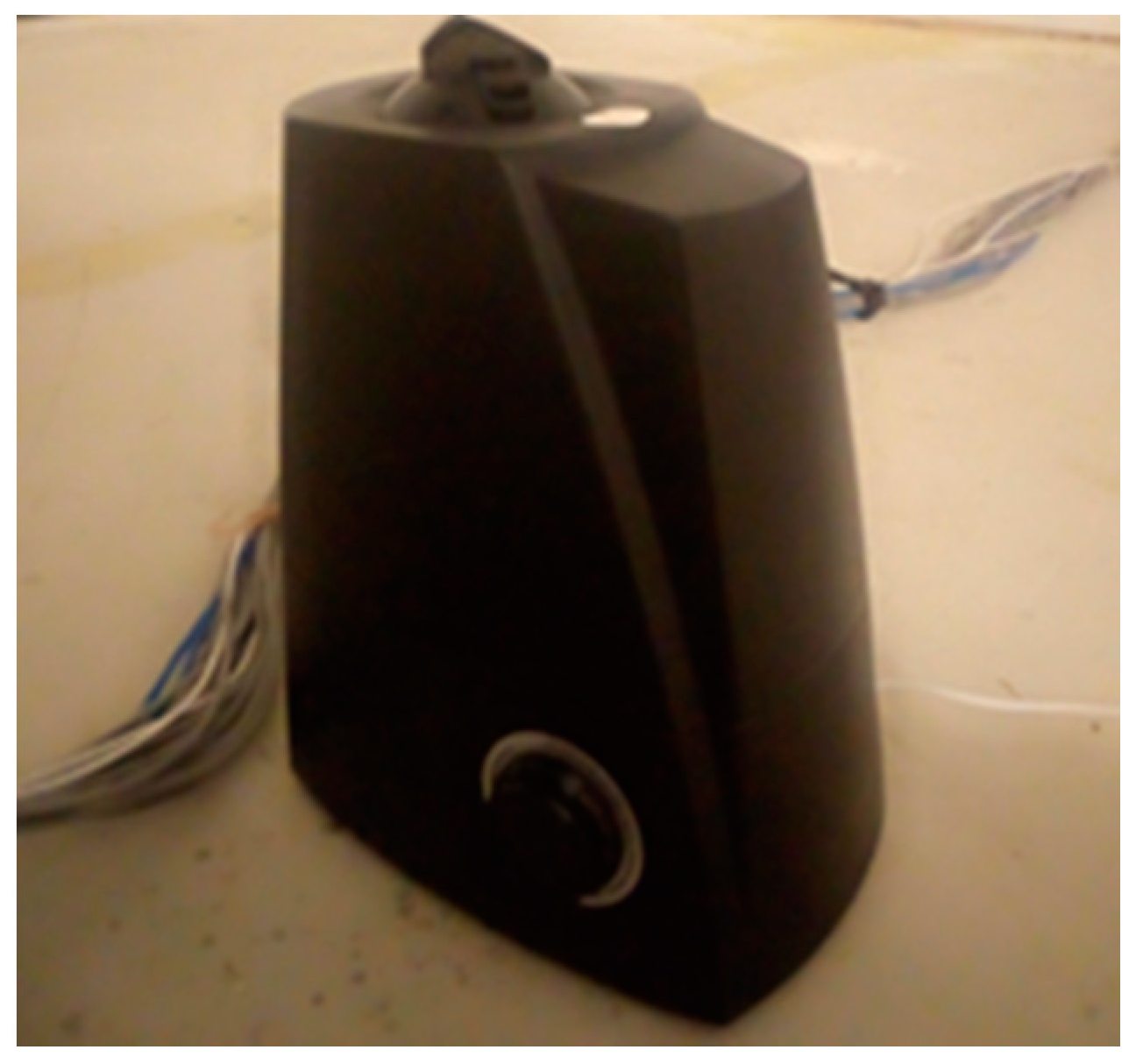
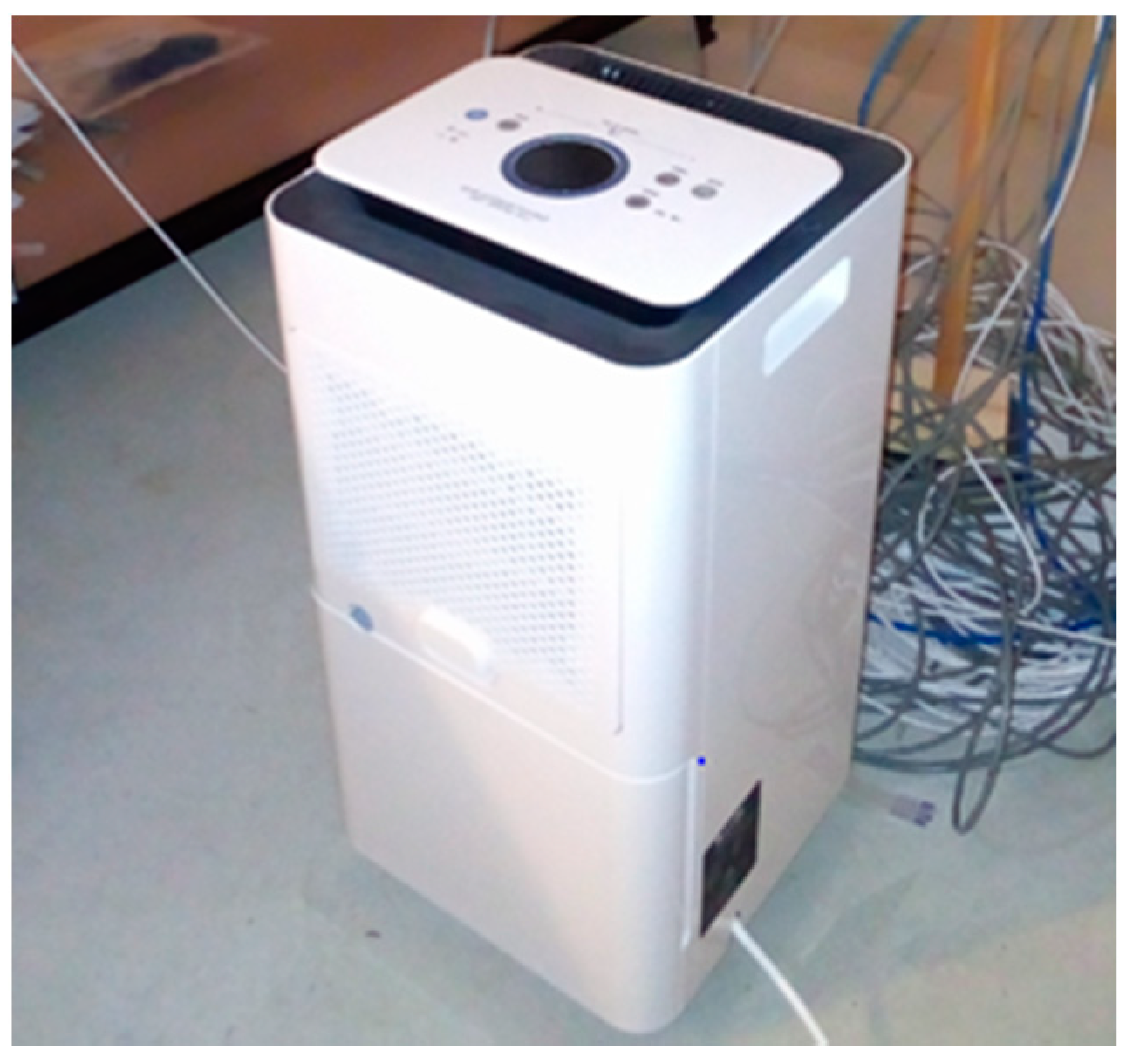
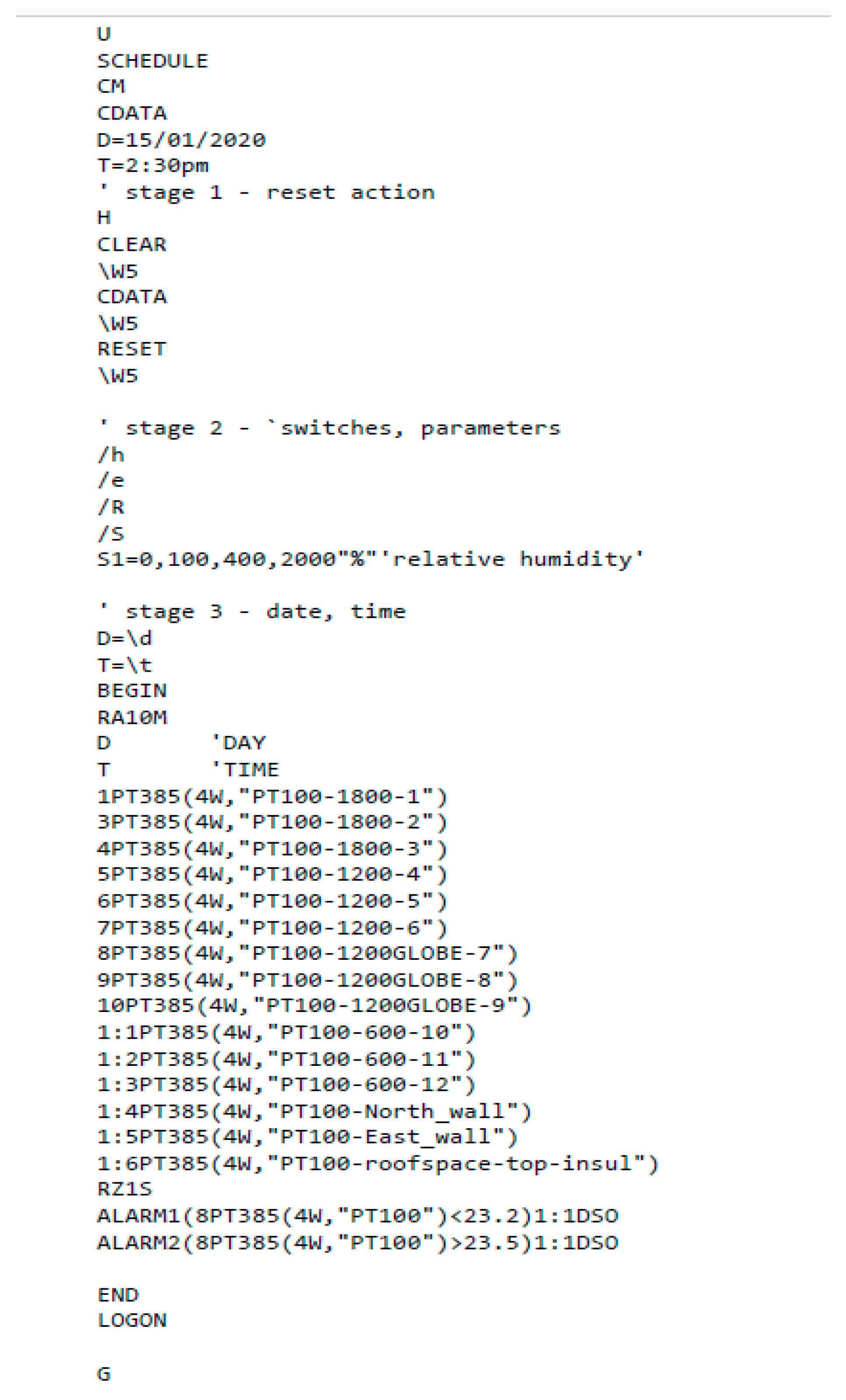
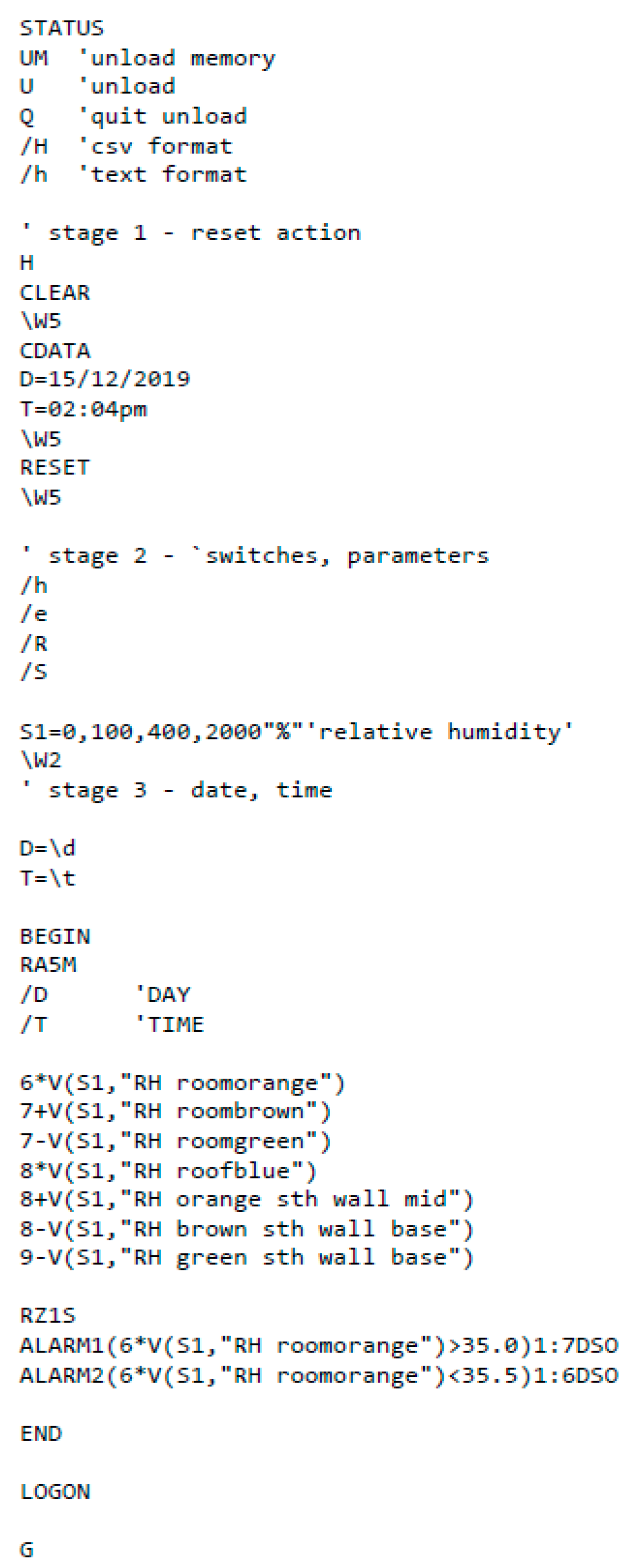


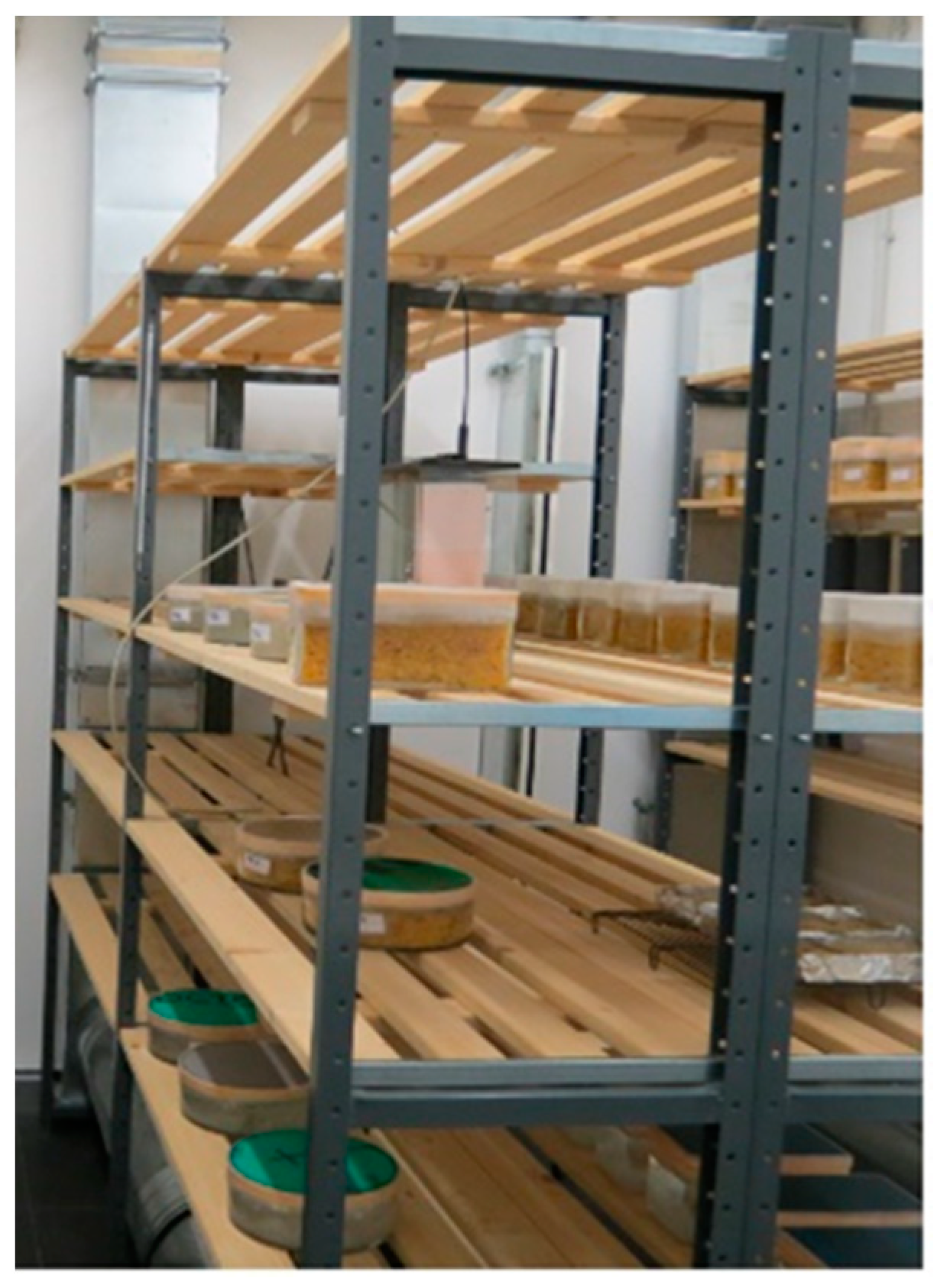

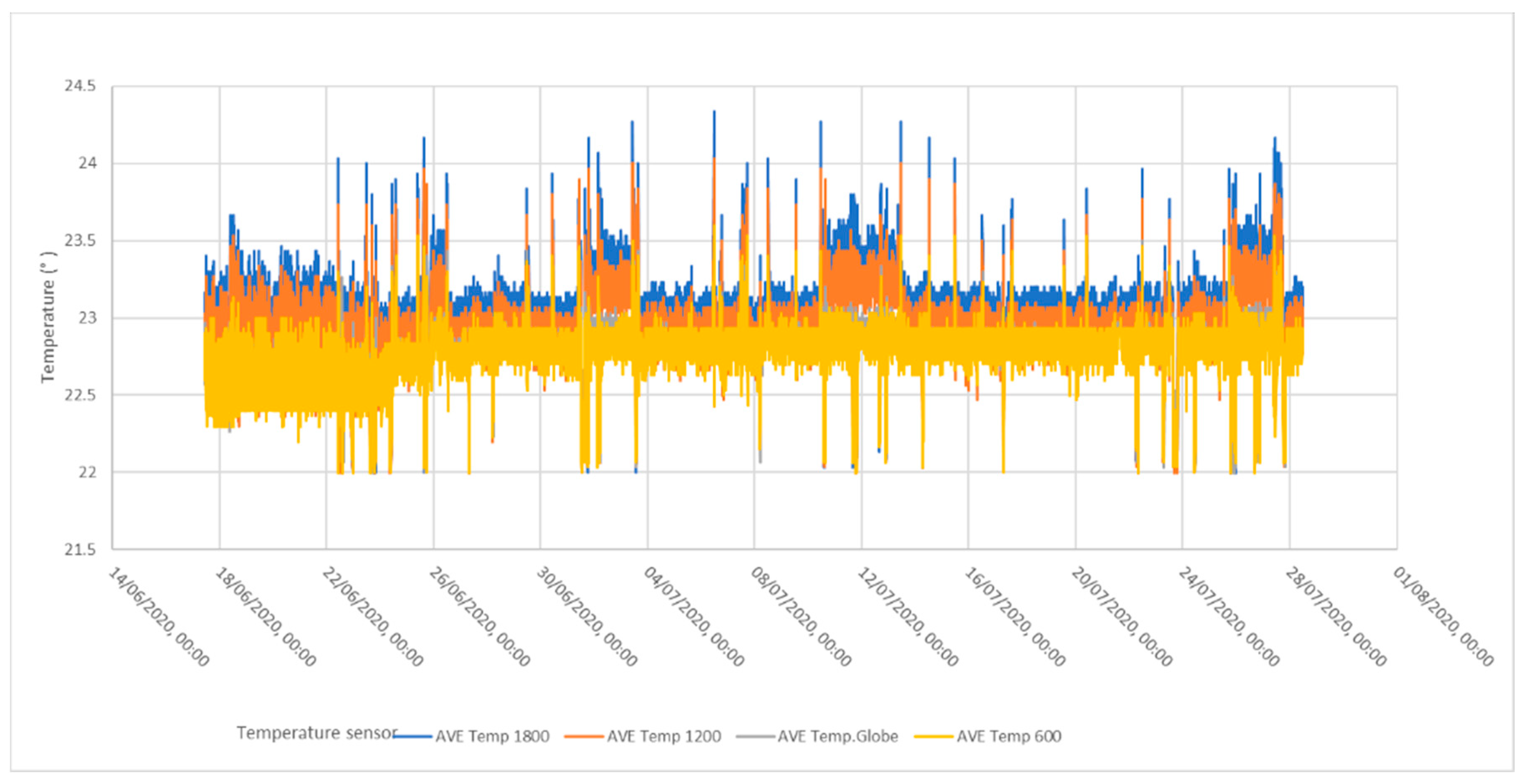
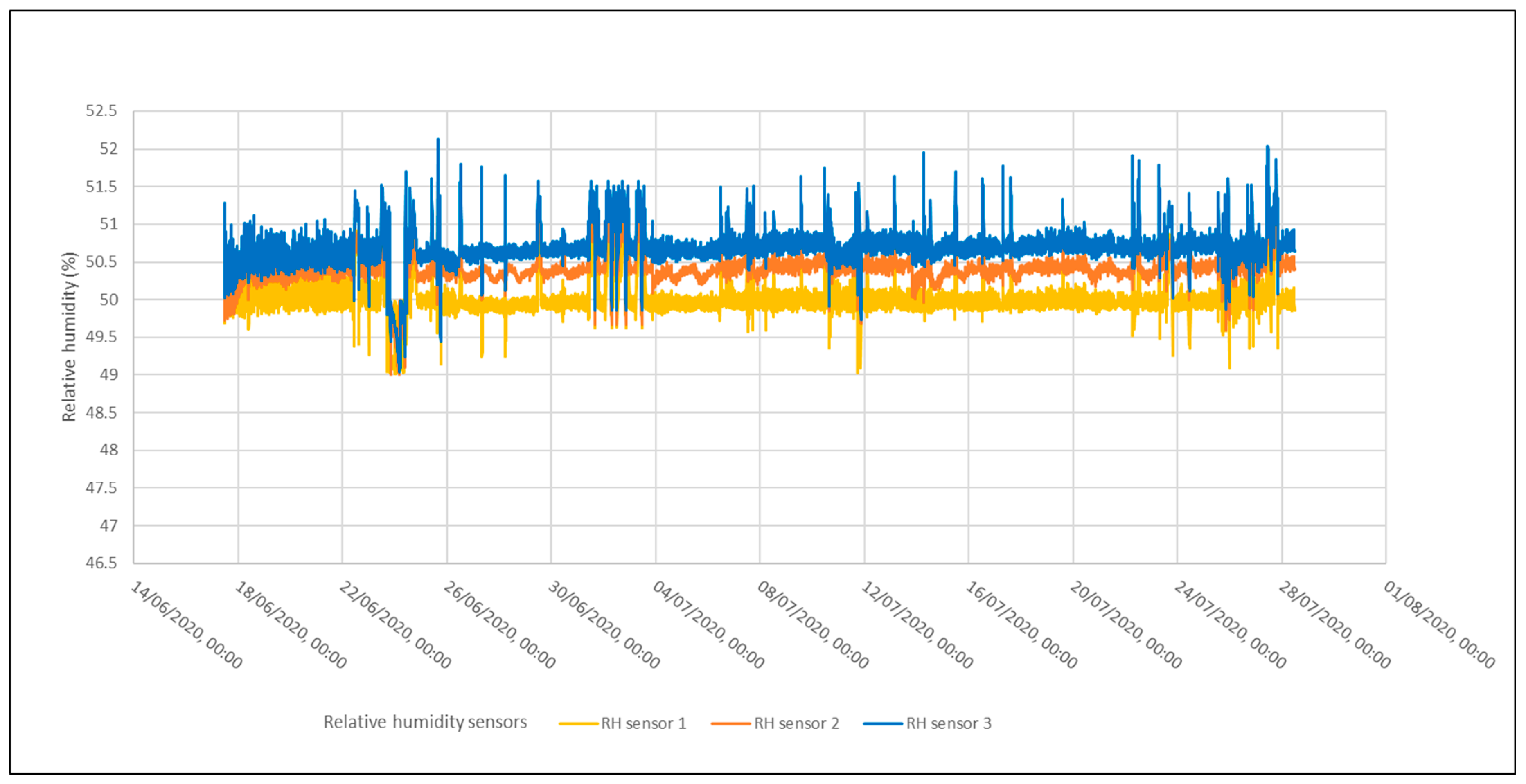
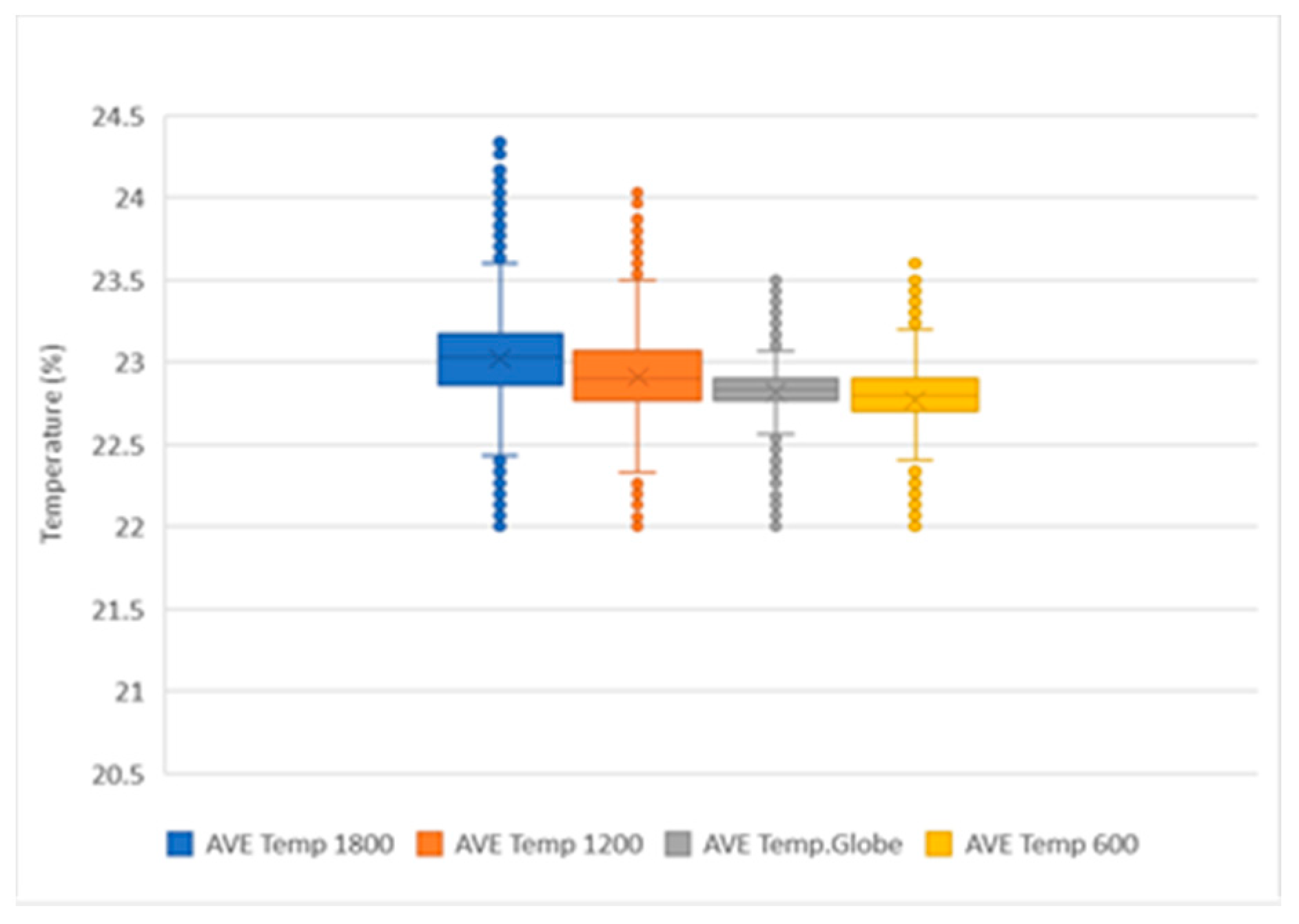
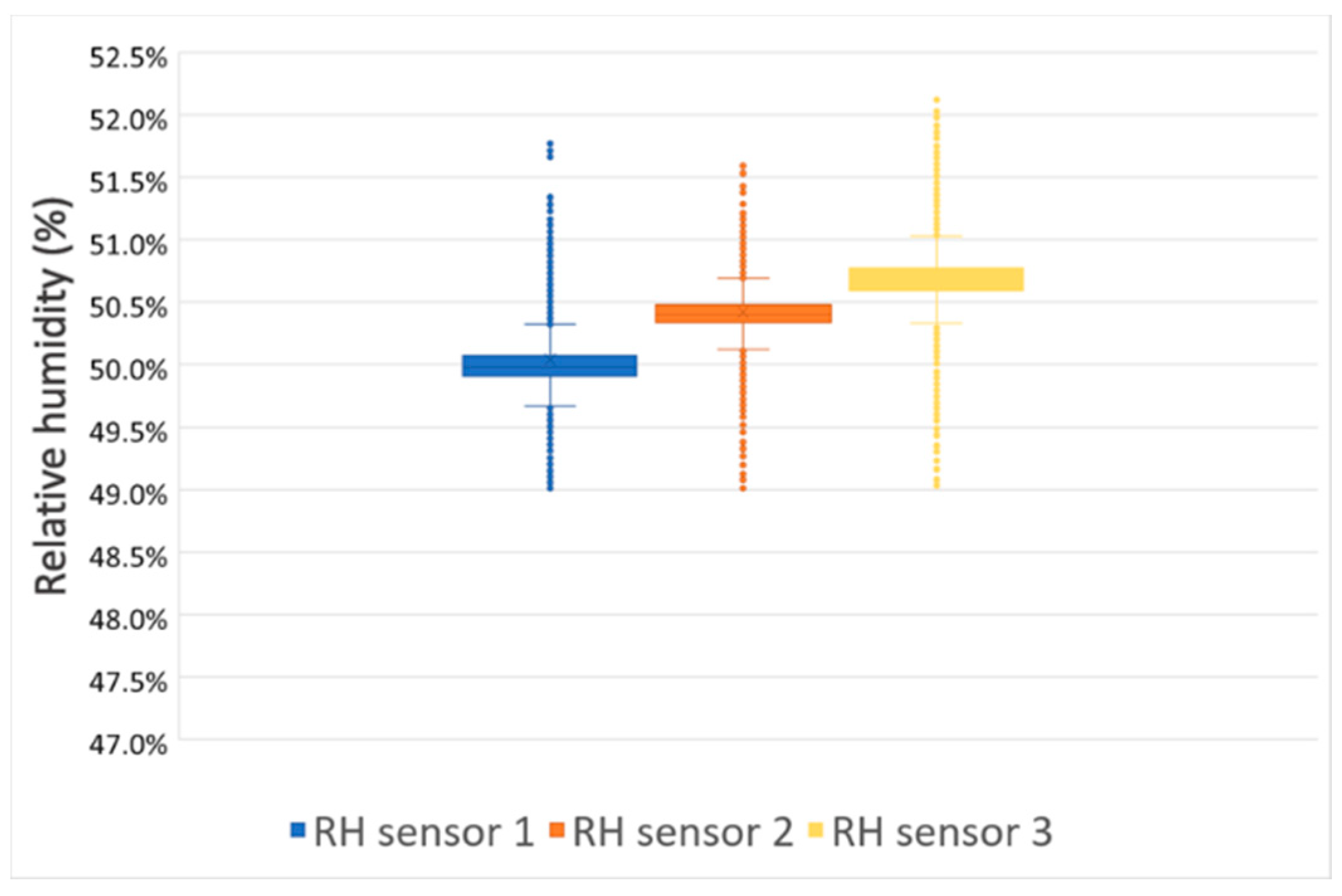
| Sensor/Equipment | Type | Location | Function |
|---|---|---|---|
| Dry bulb air temperature (V1) | Four wire Platinum RTD | Version 1–Center of room, three sensors at each reference height of 600 mm, 1200 mm, and 1800 mm | To measure test room air temperature and to inform the control of the air conditioner |
| Dry bulb air temperature (V2) | Four wire Platinum RTD | Version 2–same as Stage 1 plus air-conditioner supply air | Same as above |
| Mean radiant temperature | Four wire Platinum RTD within 150 mm diameter copper globes | Center of room, 3 sensors at 1200 mm | Information only |
| Relative Humidity | Two wire Vaisala HMW40U | Center of room, 3 sensors at 1200 mm | To measure test room relative humidity and to inform the control of the humidifier and de-humidifier |
| Air-conditioner | Daikin split system | South east corner | To heat or cool the room |
| Humidifier | 6 L Air Humidifier Ultrasonic Cool Mist Steam Nebulizer Diffuser Purifier E | South east corner | To provide additional water vapor to the test room air |
| De-humidifier | Breville The Smart Dry Dehumidifier | Center of room | To remove water vapor from the test room air |
| Data Acquisition | Datataker DT500 with Channel expansion module | To continuously collect measured room temperature and relative humidity data | |
| Relay | Solid state | Relay board | To control and switch humidifier and de-humidifier operation with alarm programming code |
| Silicone DC relays | South east wall connected to air-conditioner | To control and switch heating and cooling with switch alarm programming code |
| Parameter | At IBP, Laboratory | At UTAS |
|---|---|---|
| Dishes | Round glass dish (80 × 200 mm) | Round glass dish (60 × 195 mm) |
| Air space | 20 mm | 20 mm |
| Average barometric pressure | 933.26 hPa | 1030.5 hPa |
| Water vapor permeability of air | 2.12 × 10−10 kg/(m·s·Pa) | 1.92 × 10−10 kg/(m·s·Pa) |
| Wet cup @ 23°C 93/50% Test @IBP Germany | ||||||||
| Specimen | Mean thickness d (m) | Area m2 | Mass of specimen (g) | Water vapour flux g = G/A in kg/(s*m2) | Water vapour permeance W = g/dp in kg/(s*m2*Pa) | Water vapour resistance Z = 1/W in (s*m2*Pa)/kg | Water vapour resistance factor µ | Diffusion-equivalent air layer thickness Sd (m) |
| TA1 | 0.00082 | 0.0293 | 7.40 | 3.53 × 10−6 | 2.68 × 10−9 | 3.74 × 108 | 71.86 | 0.0590 |
| TA2 | 0.00080 | 0.0290 | 7.31 | 3.44 × 10−6 | 2.61 × 10−9 | 3.83 × 108 | 76.17 | 0.0610 |
| TA3 | 0.00084 | 0.0287 | 7.82 | 2.84 × 10−6 | 2.15 × 10−9 | 4.65 × 108 | 93.84 | 0.0790 |
| Mean value | 0.00082 | 0.0290 | 7.51 | 3.27 × 10−6 | 2.48 × 10−9 | 4.07 × 108 | 80.62 | 0.0663 |
| Standard deviation | 0.00002 | 0.0003 | 0.27 | 3.77 × 10−7 | 2.86 × 10−10 | 5.01 × 108 | 11.65 | 0.0110 |
| Dry cup @ 23°C 3/50% Test @IBP Germany | ||||||||
| Specimen | Mean thickness d (m) | Area m2 | Mass of specimen (g) | Water vapour flux g = G/A in kg/(s*m2) | Water vapour permeance W = g/dp in kg/(s*m2*Pa) | Water vapour resistance Z = 1/W in (s*m2*Pa)/kg | Water vapour resistance factor µ | Diffusion-equivalent air layer thickness Sd (m) |
| TA4 | 0.00079 | 0.0284 | 7.27 | 4.06 × 10−6 | 3.08 × 10−9 | 3.25 × 108 | 62.18 | 0.0490 |
| TA5 | 0.00081 | 0.0281 | 7.09 | 4.24 × 10−6 | 3.21 × 10−9 | 3.11 × 108 | 57.04 | 0.0460 |
| TA6 | 0.00082 | 0.0278 | 7.56 | 3.95 × 10−6 | 2.99 × 10−9 | 3.34 × 108 | 61.63 | 0.0510 |
| Mean value | 0.00081 | 0.0281 | 7.30 | 4.08 × 10−6 | 3.09 × 10−9 | 3.24 × 108 | 60.28 | 0.0487 |
| Standard deviation | 1.53 × 10−5 | 0.0003 | 0.24 | 1.44 × 10−7 | 1.09 × 10−10 | 1.13 × 107 | 2.82 | 0.0025 |
| Wet cup @ 23 °C 93/50% Test @University of Tasmania, Australia | ||||||||
| Specimen | Mean thickness d (m) | Area (m2) | Mass of specimen grammes (g) | Water vapour flux g = G/A in kg/(s*m2) | Water vapour permeance W = g/dp in kg/(s*m2*Pa) | Water vapour resistance Z = 1/W in (s*m2*Pa)/kg | Water vapour resistance factor µ | Diffusion-equivalent air layer thickness Sd (m) |
| TA1 | 0.000819 | 0.0275 | 7.05 | 3.08 × 10−6 | 2.33 × 10−9 | 4.28 × 108 | 76.02 | 0.0623 |
| TA2 | 0.000794 | 0.0266 | 6.95 | 3.03 × 10−6 | 2.30 × 10−9 | 4.35 × 108 | 80.09 | 0.0636 |
| TA3 | 0.000784 | 0.0260 | 7.21 | 3.98 × 10−6 | 3.01 × 10−9 | 3.32 × 108 | 55.76 | 0.0437 |
| Mean | 0.000799 | 0.0267 | 7.07 | 3.36 × 10−6 | 2.55 × 10−9 | 3.99 × 108 | 70.62 | 0.0565 |
| Standard deviation | 1.80 × 10−5 | 0.00076 | 0.13114877 | 5.32 × 10−7 | 4.03 × 10−10 | 5.78 × 107 | 13.03 | 0.0111 |
| Dry cup @ 23 °C 3/50% Test @University of Tasmania, Australia | ||||||||
| Specimen | Mean thicknessd (m) | Area m2 | Mass of specimen grammes (g) | Water vapour flux g = G/A in kg/(s*m2) | Water vapour permeance = g/dp in kg/(s*m2*Pa) | Water vapour resistance Z = 1/W in (s*m2*Pa)/kg | Water vapour resistance factor µ | Diffusion-equivalent air layer thickness Sd (m) |
| TA4 | 0.000824 | 0.0275 | 7.43 | 3.34 × 10−6 | 2.76 × 10−9 | 3.62 × 108 | 60.99 | 0.0503 |
| TA5 | 0.000804 | 0.0278 | 7.40 | 3.55 × 10−6 | 2.94 × 10−9 | 3.40 × 108 | 57.15 | 0.0459 |
| TA6 | 0.000805 | 0.0275 | 7.17 | 3.40 × 10−6 | 2.82 × 10−9 | 3.55 × 108 | 60.81 | 0.0490 |
| Mean | 0.000811 | 0.0276 | 7.33 | 3.43 × 10−6 | 2.83 × 10−9 | 3.52 × 108 | 59.65 | 0.0484 |
| Standard deviation | 1.13 × 10−5 | 0.000160728 | 0.142243922 | 1.11 × 10−7 | 9.28 × 10−11 | 1.13 × 107 | 02.17 | 0.0023 |
| Water Vapour Resistance Factor (µ) | |||||||||||||
|---|---|---|---|---|---|---|---|---|---|---|---|---|---|
| Anova: Single Factor | |||||||||||||
| SUMMARY | |||||||||||||
| Groups | Count | Sum | Average | Variance | Standard deviation | Groups | Count | Sum | Average | Variance | Standard deviation | ||
| Wet-cup test IBP | 3 | 241.87 | 80.62333 | 135.6542 | 11.64706973 | Dry-cup test IBP | 3 | 180.85 | 60.28333 | 7.965033 | 2.822239064 | ||
| Wet-cup test UTAS | 3 | 211.87 | 70.62333 | 169.8302 | 13.03189293 | Dry-cup test UTAS | 3 | 178.954 | 59.65133 | 4.685605 | 2.164625911 | ||
| ANOVA | ANOVA | ||||||||||||
| Source of Variation | SS | df | MS | F | p-value | F crit | Source of Variation | SS | df | MS | F | p-value | F crit |
| Between Groups | 150 | 1 | 150 | 0.982047 | 0.377789806 | 7.708647 | Between Groups | 0.599136 | 1 | 0.599136 | 0.09472 | 0.77361956 | 7.708647 |
| Within Groups | 610.9689 | 4 | 152.7422 | Within Groups | 25.30128 | 4 | 6.325319 | ||||||
| Total | 760.9689 | 5 | Total | 25.90041 | 5 | ||||||||
| Diffusion-Equivalent Air Layer Thickness Sd(m) | |||||||||||||
|---|---|---|---|---|---|---|---|---|---|---|---|---|---|
| Anova: Single Factor | |||||||||||||
| SUMMARY | |||||||||||||
| Groups | Count | Sum | Average | Variance | Standard deviation | Groups | Count | Sum | Average | Variance | Standard deviation | ||
| Wet-cup test IBP | 3 | 0.199 | 0.066333 | 0.000121 | 0.011015141 | Dry-cup test IBP | 3 | 0.146 | 0.048667 | 6.33 × 10−6 | 0.002516611 | ||
| Wet-cup test UTAS | 3 | 0.1696 | 0.056533 | 0.000124 | 0.011132984 | Dry-cup test UTAS | 3 | 0.14515 | 0.048383 | 5.08 × 10−6 | 0.00225407 | ||
| ANOVA | ANOVA | ||||||||||||
| Source of Variation | SS | df | MS | F | p-value | F crit | Source of Variation | SS | df | MS | F | p-value | F crit |
| Between Groups | 0.000144 | 1 | 0.000144 | 1.174673 | 0.339403454 | 7.708647 | Between Groups | 1.20 × 10−7 | 1 | 1.2 × 10−7 | 0.02109951 | 0.891533715 | 7.708647 |
| Within Groups | 0.000491 | 4 | 0.000123 | Within Groups | 2.28 × 10−5 | 4 | 5.70 × 10−6 | ||||||
| Total | 0.000635 | 5 | Total | 2.29 × 10−5 | 5 | ||||||||
Publisher’s Note: MDPI stays neutral with regard to jurisdictional claims in published maps and institutional affiliations. |
© 2020 by the authors. Licensee MDPI, Basel, Switzerland. This article is an open access article distributed under the terms and conditions of the Creative Commons Attribution (CC BY) license (http://creativecommons.org/licenses/by/4.0/).
Share and Cite
Olaoye, T.S.; Dewsbury, M.; Kunzel, H. A Method for Establishing a Hygrothermally Controlled Test Room for Measuring the Water Vapor Resistivity Characteristics of Construction Materials. Energies 2021, 14, 4. https://doi.org/10.3390/en14010004
Olaoye TS, Dewsbury M, Kunzel H. A Method for Establishing a Hygrothermally Controlled Test Room for Measuring the Water Vapor Resistivity Characteristics of Construction Materials. Energies. 2021; 14(1):4. https://doi.org/10.3390/en14010004
Chicago/Turabian StyleOlaoye, Toba Samuel, Mark Dewsbury, and Hartwig Kunzel. 2021. "A Method for Establishing a Hygrothermally Controlled Test Room for Measuring the Water Vapor Resistivity Characteristics of Construction Materials" Energies 14, no. 1: 4. https://doi.org/10.3390/en14010004
APA StyleOlaoye, T. S., Dewsbury, M., & Kunzel, H. (2021). A Method for Establishing a Hygrothermally Controlled Test Room for Measuring the Water Vapor Resistivity Characteristics of Construction Materials. Energies, 14(1), 4. https://doi.org/10.3390/en14010004





